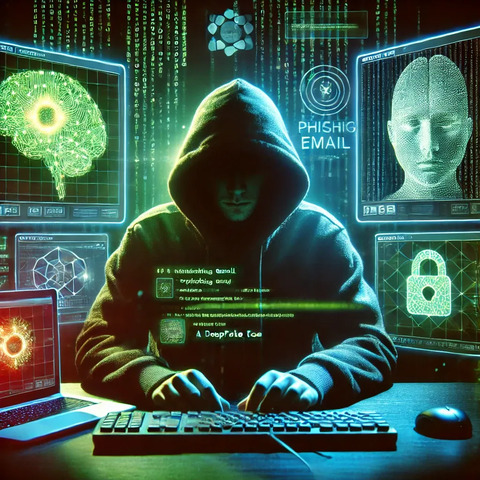The Dark Side of AI: How Hackers Utilize AI in Cyberattacks

AI (Artificial Intelligence) is like such a smart robot that assists us for various reasons like weather forecasting or video suggestions. But not such good fellows (hackers) also utilize AI to do illegal things. Let's learn about the ways:
AI Assists Hackers to Send Spurious Emails (Phishing Attacks)
Fake emails used to be badly spelled and suspicious-looking. Nowadays, AI makes them sound authentic with properly spelled words, even copying the style of genuine people writing.
Example: An employee receives an email purporting to come from his employer, requesting the deposit of money somewhere. The employee thinks it is authentic and deposits the money—oops! It was fake.
AI Creates Hyper-Intelligent Viruses (Malware & Ransomware)
Malware is similar to a sneaky computer virus that steals your information. Ransomware encrypts files and demands money in return for their release. AI assists these viruses so they can mutate without being detected by protective software.
Example: An organization has a virus detector, but AI-based malware keeps evolving, so the detector cannot pick it up. The organization gets attacked, and all their confidential files get encrypted.
AI Can Fake People's Faces & Voices (Deepfake Attacks)
Deepfake is when AI creates a video or sound recording of a person that is real-looking and sounding but is not.
Example: A deepfake video of a CEO (top boss) instructing staff to send money to a bank account. Staff send it, but it was a fake video created by hackers!
AI Assists Hackers to Break Passwords Quicker
AI can search through millions of hijacked passwords and study how individuals create passwords. Then, it can try to guess passwords much quicker than a human hacker.
Example: Someone's password is "John123!". AI soon learns that individuals use names and numbers, so it easily breaks the password.
AI Assists Hackers in Deceiving People (Social Engineering)
Hackers employ AI to send impersonal-looking messages that appear personalized. AI scans social media posts and develops messages that look like they are coming from a person who is well known to you.
Example: Someone sends you a message from your "friend" on Instagram asking for money. It looks real, but AI mimicked your friend's typing pattern and fooled you.
AI Enables Hackers to Oversee Massive Armies of Computers (Botnets)
Thousands of computers are infected by hackers with AI-powered software that remotely operates them all at the same time. They use their computer army to bring different websites down with denial-of-service attacks.
For instance, during the biggest sale event, a shopping website gets clogged with fake visitors generated from hacker-operated computers and crashes, resulting in money losses for the company.
AI in Cyber Warfare: Big-Scale Attack Between Countries
Governments employ AI to spy upon other nations or cut off critical systems such as electricity or the internet.
Example: A nation's power grid (electricity system) is attacked by AI malware, and there's a blackout. Citizens freak out, and nothing works anymore.
How to Stay Safe from AI-Powered Cyberattacks
- Use strong passwords (not simply "John123!")
- Enable two-step verification (additional protection when logging in)
- Beware of emails & messages (even if they appear genuine)
- Update your software (so hackers can't use old tricks on you)
- Turn on AI-based security (battle AI with AI!)
Conclusion
AI is such a superhero—it can do good or bad. As AI assists us to battle back hackers, hackers also utilize AI to scam us. We thus need to remain smart, keep our safety updated, and be able to recognize scams!




